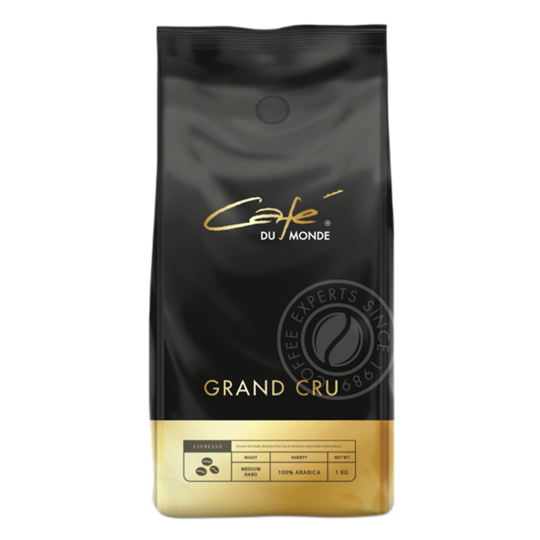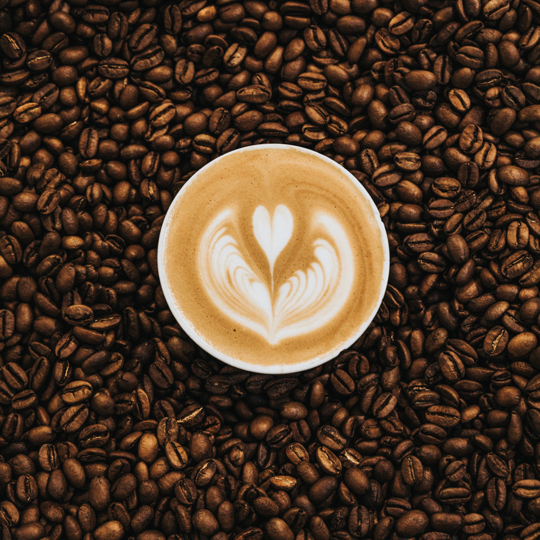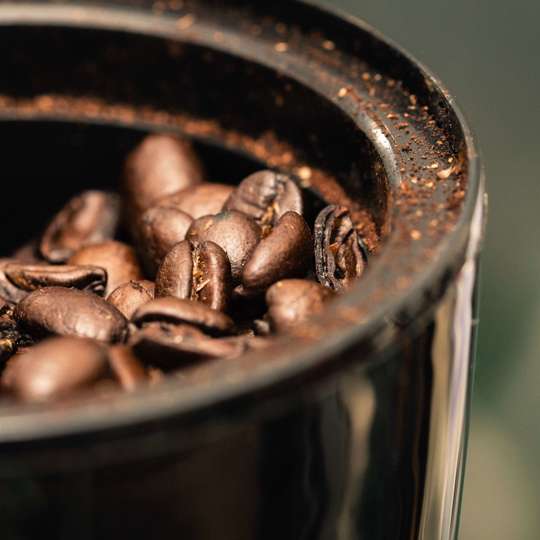
Grand Cru Espresso Beans
This is our 100% Arabica espresso coffee blend. It has the best Kenyan AA Grade beans for acidity, citrus notes and a chocolate after taste.
£25.65
View
Coffee is packed with great flavours and aromas that are different across the types of coffee bean. It has been discovered that there are over 800 nuances which affect coffee tastes and aromas, compared to the 150 found in wine.
The coffee taste that we know and love is created by the roasting process - unroasted coffee is tasteless. The natural chemical change at which sugars in the coffee beans start caramelising significantly is called pyrolysis. It is estimated that a coffee bean contains more than 2000 natural substances which can alter its taste and aroma after roasting.
The coffee roasting process is most commonly conducted between 200 degrees celsius and 240 degrees celsius with a conventional roaster taking up to 14 minutes to roast the beans. During the roasting process coffee beans become up to 23% lighter and 100% larger.
Although there are no standardised definitions of degrees of roast, the most common terms are: Light, Medium, Viennese, Dark, Continental and Italian. The darker the roast the more the unique flavours of a bean are removed - which is why dark roast were originally designed to hide the flaws of inferior coffees.

Coffees from the America regions are usually a 50 / 50 split between acidity and body. African coffees usually have more acidity whilst coffees from Indonesia often have more body.

The gourmet coffee experience is multifaceted and sophisticated. It includes many pleasurable nuances which can be appreciated by amateur and connoisseur alike.
The are main five main attributes of coffee which contribute to your overall experience:
The sensation of smell emanating from the coffee, not just before drinking but after when present in the mouth. The aroma in coffee can greatly enhance the overall characteristics of a coffee.
E.g. Spicy, Nutty, Floral
The perception of sweet, sour, salt and bitter and the nuances which contribute to overall taste of coffee beans on the tongue. Aroma can greatly affect the taste outcome of a coffee.
E.g. Sweet, Mellow, Tangy
The aftertaste, or the feel that lingers in the mouth well after initially experiencing the coffee. A good coffee will have pleasant attributes in it’s finish.
E.g. Liquorice, Dry, Soft
A positive attribute of coffee, a pleasant sharp taste or bite in the mouth. A ‘snap’ or ‘tingle’. A good comparison is the dryness in wines. The darker the roast, the less acidity in the coffee.
The weight of the coffee physically in the mouth. Rich, full feeling at the back of the palate. Body tends to increase in the darker roasts.

This is our 100% Arabica espresso coffee blend. It has the best Kenyan AA Grade beans for acidity, citrus notes and a chocolate after taste.
£25.65
View